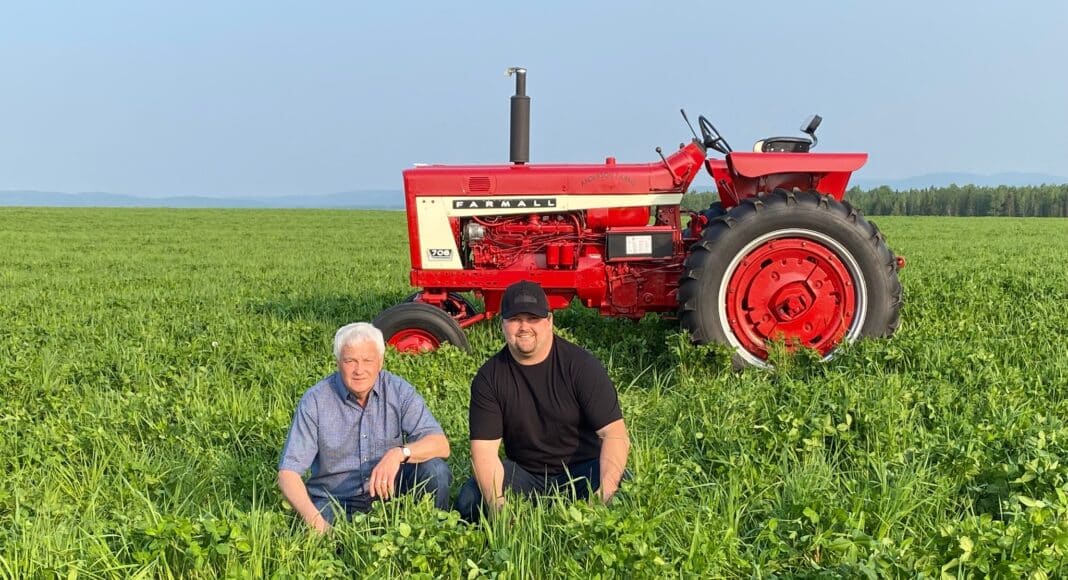I’m the fourth generation growing potatoes on Anderson Farms in Beechwood, N.B. My great grandfather, grandpa and father have spent decades toiling over our rocky hilly land. As I now farm that same land (and a little bit more after buying the neighbour’s farm), I find myself focusing on how to keep the soil there for the next generation.
We have a lot of rocks. But the soil is very fertile and usually grows good crops — it comes with its challenges. For example, sometimes we can break machinery on the ledge which is a layer of rock under the topsoil. Rocks can be challenging to remove from the potatoes as they’ll bruise them up too much. And if we get heavy rains, it’s hard to get back into the field to work sometimes.
To keep that soil in place and stop it from washing away when it rains or blowing away during those drier years, my father Brent and I use crop rotations. We have tried two-year rotations, but they never worked as well. So, we now stick to a three-year rotation as much as we possibly can.
In year one we plant potatoes, year two oats that we under seed with clover, alfalfa, and Timothy — this leaves a green cover over the winter in our fields and roots in the soil. In year three we mow down the hay crop in the fall and start all over again with spuds the following spring.
The hay crop isn’t sold anywhere as there’s not many livestock producers left in our area, but the yield boost we see in our spud years more than makes up for this “lost” year. The hay crop goes back in the ground acting as a green manure to help build our soil health.
At Anderson Farms we grow processing potatoes which we sell to McCain Foods along with growing our own seed potatoes. Keeping those spuds from seed to processing in top notch form with the best growing conditions is paramount to the financial health of our farm.
On top of our crop rotation, we’ve recently started deep tilling using a chisel plow and intend to use it more in the future. This was a change from our previous moldboard plowing. It leaves more crop residue on top of our soil helping to reduce soil erosion from wind and rain.
Looking toward the future we want to clear more land — this will give us more options for our crop rotation. We also want to put in drainage tiling where the water lays, along with grass waterways and terraces in spots where we get a lot of water runoff. This should help to reduce water piling up in low spots in our fields and washing away soil.
At the end of the day, we’re the temporary caretakers of the land. As the generations did before me, I work to keep the land in working order to make sure it’s there for the next generation, so that someday there can be a fifth generation of Andersons working the same land.











